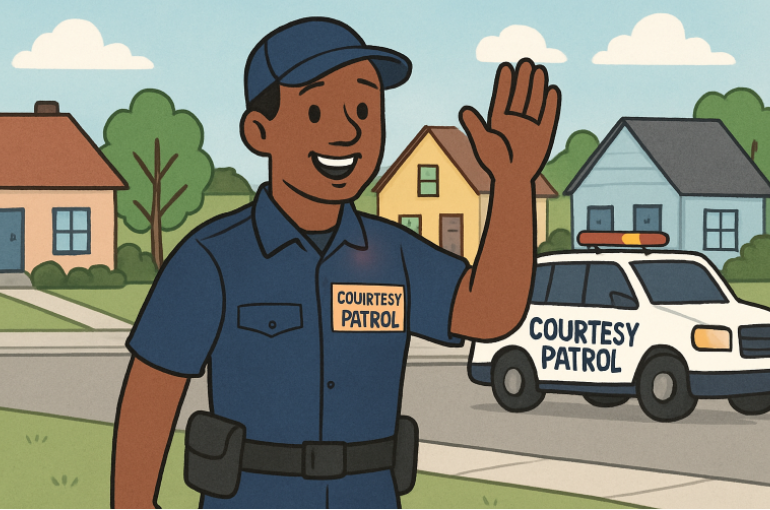Safety is a foundational element for thriving neighborhoods, and the presence of visible security plays a crucial part in nurturing that security. One of the most effective strategies communities can adopt is implementing a courtesy patrol service. Property owners and community associations invest in proactive deterrence by deploying uniformed patrols to monitor neighborhoods and public spaces. Criminals are less likely to target areas with a consistent and visible security force, and residents enjoy heightened peace of mind, knowing their environment is actively monitored by professionals who are quick to respond to issues as they arise. The benefits of courtesy patrols extend beyond visual deterrence. The reliability and professionalism of these patrols help foster deeper bonds between residents and those charged with their protection. As officers become a regular fixture in the community, residents are more likely to communicate concerns, report suspicious activity, and build the trust necessary for practical cooperation. Ultimately, this dynamic supports safer, more connected communities where everyone feels empowered to participate in maintaining security.
These patrols are not just passive observers. Strategically implemented courtesy patrol programs have the training, protocol, and expertise to spot potential safety threats before they escalate. Whether through foot patrols, mobile units, or scheduled walk-throughs of shared areas, their active engagement ensures crime is discouraged, and incidents can be swiftly addressed. By bridging the gap between preventative visibility and hands-on safety management, courtesy patrols play a pivotal role in stopping problems before they start. Significantly, courtesy patrols alleviate pressure from law enforcement agencies overwhelmed by public safety demands, by handling routine security tasks—such as monitoring entrances, inspecting facilities, and mediating minor disputes—patrols free up police officers to focus on critical investigations and emergencies. This effective division of labor enables communities to benefit from a multi-layered approach to security that is both resourceful and responsive.
The Role of Visible Patrols in Crime Deterrence
When would-be offenders see uniformed patrols consistently present in their target area, their calculated risk increases—often enough to make them reconsider illegal actions entirely. Visible security can be a significant barrier to crime, especially burglary, vandalism, and vehicle theft. Courtesy patrols, equipped to engage with the community and notice subtle environmental changes, can share valuable intelligence with local law enforcement, creating a seamless integration of community-based and official policing efforts. In apartment complexes, shopping centers, and business districts, these patrols send a clear message: this area is monitored, and criminal activity will not go unnoticed. Over time, this presence boosts overall resident satisfaction and can help increase property values as safety becomes a key community feature.
Building Trust Through Community Engagement
A courtesy patrol is most potent when it evolves beyond simple surveillance to become a trusted part of the neighborhood fabric. Successful patrol officers go out of their way to get to know residents, becoming familiar faces who can proactively address concerns and mediate disputes. This connection fosters a culture of accountability and shared purpose where everyone works together to keep unsafe behaviors out of the community. Community members who feel supported by courteous, attentive patrols are more willing to come forward with crucial information, acting as additional eyes and ears. This cooperation broadens the reach of patrol efforts and builds the trust necessary for successful long-term security projects.
Proactive Measures and Rapid Response
Prevention is always preferable to reaction. Well-trained courtesy patrols excel at identifying early warning signs, such as unfamiliar vehicles loitering, maintenance issues that could lead to safety hazards, or emerging patterns of anti-social behavior. By addressing these risks early, patrols reduce the opportunity for more serious crimes to take root.
Additionally, the speed with which patrols can respond to unfolding situations ensures that any incident—a broken window, a noise complaint, or unauthorized access—is handled promptly. This reduces disruptions and sends a strong message to those considering misbehavior that rule-breaking will have immediate consequences.
Enhancing Law Enforcement Capabilities
Law enforcement agencies often balance complex criminal cases with the need to maintain everyday safety. Courtesy patrols are essential, managing day-to-day issues and reporting actionable trends. This partnership enables police to allocate resources more effectively while maintaining a strong security presence in areas that matter most to communities. As an auxiliary force, courtesy patrols are uniquely positioned to provide personalized attention in ways that broader police operations cannot. Their routine rapport with residents ensures that minor conflicts or emerging issues don’t escalate or go unnoticed for long periods.
Implementing Effective Courtesy Patrol Programs
The most impactful courtesy patrol programs are built upon consistent training, robust protocols, and close collaboration with community members. Ongoing education keeps patrol officers up-to-date on the latest safety techniques and local trends, while advanced reporting technologies ensure seamless communication with residents and law enforcement agencies. Community involvement is also critical for success. Encouraging residents to provide input, participate in safety surveys, and attend security meetings empowers them to shape the program to their unique needs—ensuring solutions are tailored, effective, and genuinely supported by those they serve. Integrating real-time communication platforms further strengthens the patrol’s ability to coordinate with stakeholders as new challenges arise quickly.
Real-Life Examples of Successful Courtesy Patrols
The positive impact of courtesy patrols is evident in numerous communities nationwide. In Lakewood, California, for example, the city council recognized the rising need for a broader security presence and approved the extension of security guard patrols to daylight hours. The result was a measurable decrease in criminal activity and a notable increase in community satisfaction and public confidence. This underscores how effective a proactive and well-implemented courtesy patrol strategy can improve neighborhood safety and quality of life. For more details on this case study, see the Lakewood Council Recap.
Conclusion
Courtesy patrols are an essential component in the quest for safer communities. They combine visible deterrence, proactive risk management, and trusted engagement to keep neighborhoods secure. For communities seeking to invest in effective, human-focused security solutions, deploying a well-regarded courtesy patrol service is one of the most valuable and reliable options.







